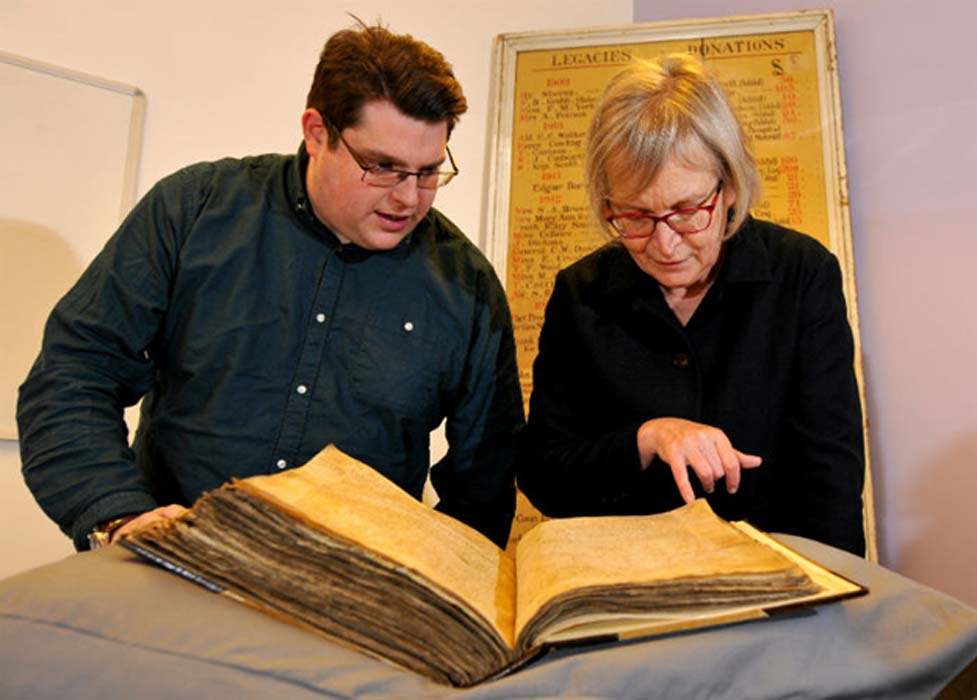A Daring 14th Century Nun Faked Her Death To Avoid A Sexless Life In A Convent
Medieval historians working in the archives at the University of York have discovered a unique entry in an Archbishop’s register telling of a daring nun, “Joan of Leeds”, who not only made a lifelike dummy, but she faked her own death to pursue a path of “carnal lust.”
Professor Sarah Rees Jones is the principal investigator on the revelatory project, and she told reporters that her team’s discovery is “extraordinary - like a Monty Python sketch.” A report on Medievalists.net explains that the University of York team had partnered with specialists from the National Archives and the Arts and Humanities Research Council and York Minster.
Having been awarded nearly £1m (approximately $1,300,000) of funding from the Arts and Humanities Research Council, the Borthwick Institute for Archives at the University of York, in partnership with the National Archives, is currently translating 16 Latin books, making their contents available online.
Essentially, the digital archive of the registers of the archbishops of York between 1304 and 1405 offers specialists and amateur researchers a deeper understanding of the socio-political control wielded by the Archbishops of York over northern English people.
Nun On The Run, For A Life Of Fun
According to an article in The Guardian the historians learned of the 14th century nun who faked her own death in order to escape her convent, “in a margin note”, written in Latin, within one of “16 heavy registers” used to record the business of the archbishops of York in the 14th century.

Benedictine nun Joan cast aside her vows and ran away. (rotozey / Adobe)
The specific note was dated 1318 AD and was written by archbishop William Melton to the Dean of Beverley telling him about the “scandalous” Benedictine nun Joan who had “impudently cast aside the propriety of religion and the modesty of her sex.” What is more, Joan suffered “a malicious mind simulating a bodily illness” which caused her to fake her own death.
With the help of “numerous accomplices, evildoers, with malice aforethought,” they crafted a life like dummy and she even assigned it a burial spot. After faking her own death, “having turned her back on decency and the good of religion,” Joan followed a “perverted her path of life arrogantly to the way of carnal lust and away from poverty and obedience.”
The Fate of The Runaway Nun
It is unclear if Joan ever returned to her convent and Rees Jones told reporters that this “is really frustrating” because “We don’t always get the full detail or know what the outcome was.” Rees Jones said that among other reasons simply “not wanting to be celibate” often led nuns to fleeing their religious houses, and Jones added that this applies to men as well as women.
However, a clue about the nun’s fate might be found in A History of the County of York which details that in 1301 “a nun at the priory of St. Clement named Cecily “met certain men at the priory gate” and “throwing off her nun’s habit” rode off with them to Darlington, where Gregory de Thornton was waiting for her, and with him she lived for three years or more.”

The register that details the story of Joan of Leeds. (York Archbishops' Register)
Not only does the story of the fleeing nun interest historians, but also the life of Archbishop Melton, who not only tracked down nuns on the run but in his later life led an army of common folk and priests into battle against an army of Scots. An article on The Douglas Archive explains that in 1319 AD, during the Wars of Scottish Independence, an English army attempted to cross the River Swale at Myton.
Scottish clan leader Douglas was in waiting and set fire to bales of damp straw and when the “Scots let out a great roar” panic set into the English forces and Douglas “captured much treasure as the Archbishop had carried with him large amounts of church plate.”
- 17th Century Letter Allegedly Written by Possessed Nun Decoded For the First Time
- Capricious Life of Anne Boleyn, The Woman Behind the Church of England
- Blue Pigment Found on Medieval Teeth Reveals Secret Existence of Female Scribes

The English army attempted to cross the River Swale. (Kim Traynor / Public Domain)
The Archbishop’s failed military excursion led to the treasure of 31 Abbeys and religious houses being pilfered to make up the hole in church coffers. Considering historians are discovering details about the lives of warring Bishops and errant nuns, one can only wonder what else might be discovered in the 16 books.
Top image: Gary Brannan and Sarah Rees Jones examine the note regarding Joan of Leeds in one of the archbishops’ registers. Source: University of York.
By Ashley Cowie



















